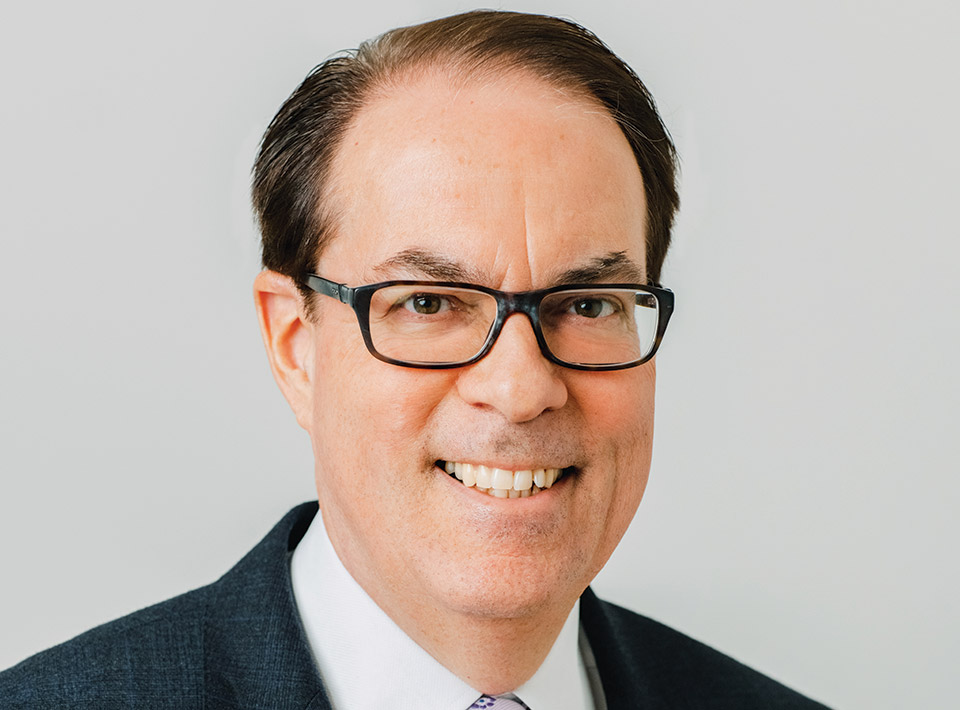“If we continue like we are, I think the market will collapse,” says Djellil Bouzidi, an academic and an expert in sustainable finance.
Bouzidi is a member of think tanks such as Terra Nova and The Bridge Tank and is senior adviser to the NGO Bankers Without Boundaries. He was also one of the first proponents of explicitly linking public debt to environmental debt. In 2015, with professor Michael Mainelli, Bouzidi published a paper ahead of COP21 in Paris that proposed the creation of environmental policy performance bonds – the basic structure of what would become sustainability-linked bonds (SLBs).
Today, Bouzidi advises issuers and underwriters on specific SLB transactions – he recently worked with the Chilean government on its March 2022 bond, the world’s first sovereign SLB. He also works with investment banks and asset managers, so his warning that the SLB needs to evolve to avoid a premature death is striking.
“If we don’t enhance the pricing and if we don’t reduce asymmetry, the market will see more and more bad deals,” he says. “Then the good deals won’t come to the market – they’ll opt out and, at a certain point, investors will do the same. I don’t know when, but the market will probably collapse.”
Bouzidi’s criticisms of today’s SLB market centre on pricing and the asymmetrical availability of information when it comes to assessing specific sustainability performance targets (SPTs). These are the metrics that determine whether investors receive a step-up (or down) in the coupon’s interest rate payments.
Both, he says, are problematic and threaten the future viability of SLBs as a structure within the sustainable finance toolkit.
Investment bankers were giving clients and potential clients very bad advice. They are a little bit lazy
Djellil Bouzidi

Underlying this is a broader critique of investment banks – and the new industry of third-party ‘sustainability assessors’ or second-party opinions (SPOs). Having worked closely with investment bankers in a variety of roles, he is far from impressed with many of those who are charged with growing this important area of finance.
“I was discussing SLBs with the climate team from [a European corporate] and I asked them why the deal they were proposing had a 25-basis point step-up if the company failed to meet its SPTs. [They] told me: ‘[We] don’t understand your question – [our] banker told [us] that 25bp is a constant and you can’t even question it.’
“So that’s when I understood that investment bankers were giving clients and potential clients very bad advice,” Bouzidi claims. “They are a little bit lazy. They say to companies: ‘Don’t worry about step-downs, just take a step-up and you will see that gained through ‘greenium’ upfront because the issue will be five or six times oversubscribed.’”
Bouzidi sounds incredulous when recounting his experience of leading internal training sessions for some of the banks that are in the league table of the world’s top 10 sustainable finance issuers.
“I was talking to bankers who work on these products on a daily basis – a professional that was advising issuers on SLBs – and they were not aware of some really basic stuff,” he says. “They didn’t have any probabilistic thinking when it came to the likelihood of an issuer hitting the SPTs. They also didn’t have any idea why 25bp is the market standard, where is it coming from and should there be a market standard. For how many years should the step-up be applied?”
Bouzidi believes that this 25bp market standard has become established though the inertia of bankers, but that such a common penalty increase in the coupon payments is flawed for a couple of reasons.
First, the same step-up is being applied to all issuers, from investment-grade sovereigns to high-yield corporates, and therefore pricing doesn’t reflect the broader risk profile of the issuer. That feeds into the second problem – the step-up penalty as a percentage of total financing cost.
In one example, retailer H&M came to the market in 2021 with a €500 million deal where the 25bp step-up was equal to 100% of its spread over the benchmark, but the retailer has experienced a big relative increase in funding costs since then. And so today 25bp wouldn’t be anywhere near 100% of the funding spread over its benchmark and therefore the impact from failing to meet the SPTs would be less material than it was before.
In the past year, as overall funding costs have in many cases doubled for issuers in the international debt capital markets, why has the step-up remained static at 25bp?
Sovereign sustainability
Bouzidi and Mainelli’s proposal for explicit linkages between debt and environmental performance was initially aimed at sovereigns, but it was in the private market that the SLB first emerged. In March 2022, Latin America saw the first sovereign SLB, when Chile launched a $2 billion, 20-year bond. Then in October 2022, Uruguay followed with its $1 billion SLB that matures in 2034.
Bankers report interest from others, with Mexico cited as most likely. Brazil’s much anticipated sustainable bond is expected to be a an SLB structure, although some bankers tell Euromoney they think the government may end up backtracking on this decision and ultimately present a green use-of-proceeds transaction. Sustainable finance (green bonds and SLBs) represented 28% of all international issuance in Latin America in 2022, double the global rate of 14%.
Bankers have different views on the role of step-ups in the SLB structure. Are they really penalties – meant to be sufficiently large so as to enforce corporate behavioural change – or are they more signposts of good intention and enlightened environmental, social and governance (ESG) policies?
If it is the former, the step-ups surely need to be calibrated on a more individual basis for specific issuers, rather than the industry standard of 25bp. If it is the latter, the materiality of the financing cost is secondary.
For Alexei Remizov, head of Latin America debt capital markets at HSBC, step-ups need to be large enough to make companies work hard to avoid paying them.
“The step-up needs to be punitive enough in the context of the base rate that you’re paying for the issuance rate,” he says. “When we are talking to companies that have seen their 10-year funding costs rise from 3% to 5%, should the step-up increase to be the same percentage of the base rate? These dialogues are happening now, and there is no question that structures are getting more scrutinized.”
Why is 25bp the step-up standard?
Asked why there is a flat market standard of a 25-basis point step-up in coupons if sustainability performance targets (SPTs) aren’t met, Gordon Kingsley, head of debt capital markets for Latin America at Crédit Agricole CIB, says: “I think the short answer is that it is because it is, and everyone followed the original Enel format.”
(Italian utility Enel was the debut issuer in the market in 2019).
“But I would agree that there should be differentiation – either in a higher rate environment where you might want more impact from a step-up; or let’s say a single-A pays 15bp and a double-B maybe pays 35bp to 75bp.”
Djellil Bouzidi, an academic and an expert in sustainable finance, initially proposed a step-up level linked to ratings but has largely abandoned that approach for being overly complicated. He now favours a percentage of total coupon – so a 5% coupon might have a 50bp step-up and a 7% would have a ‘penalty’ cost of 70bp.
“We think about calibrating the size of the step-up to ensure the financial penalty and/or incentive is material to each issuer,” notes Peter Borgesi, debt capital markets originator for Societe Generale. “Finding a universal definition of ‘material’ is challenging as a number of factors need to be considered for each issuer; and I think this is why the market has so frequently defaulted to 25bp, a number that is arbitrary but has been accepted by investors and issuers across global markets.”
Perspectives
Borgesi acknowledges that investors have a desire to see step-ups increase as yields rise.
“However, I would counter that, from an issuer’s perspective, the nominal financial penalty paid on a step-up may still be considered quite material regardless of whether the coupon is 2% or 8%. One might even argue that as funding costs rise and issuers become increasingly focused on reducing interest expense, that a 25bp penalty can be even harder to justify to each issuer’s respective shareholders.”
Anne van Riel, head of sustainable finance capital markets Americas at BNP Paribas, agrees that investors are questioning the 25bp standard but also stresses the issuers’ perspective.
“We can debate whether 25bp is enough or not,” she says, “but [issuers] are committing to something, and they’re committing to potentially pay a penalty if a target is not reached. The issuer’s alternative is plain vanilla – or try to find the expenditures and do a green/use-of-proceeds [transaction]. I understand the investor view. They want to see bigger step-ups for issuers to put more money at stake, [but] I think it’s a very hard sell to issuers in this market.”
Some bankers also push back on the criticism of the market standard 25bp and argue that the relative financing risk isn’t all held by investors.
“I understand the point that as yields have risen, the step-up is now a lower proportion of total financing, but these bonds are often 10 years, right?” asks Adrian Guzzoni, head of Latin America debt capital markets at Citi. “And who knows where rates are going to be in five years from now.”
However, others aren’t convinced that the 25bp step-up needs to change.
Surya Bhattacharjee, head of Latin America debt capital markets for BBVA, is one.
“We haven’t heard investors questioning it yet,” he says. “It could come up, but I think it’s not so much about the actual number so much as it’s about the optics of not achieving the SPT. The reputational risk is more relevant for the issuer, in terms of being seen as not hitting the target. It doesn’t matter so much if the step-up is big or small.
“And it’s the same for investors, by the way. They don’t want to end up with a bond that isn’t in line with their ESG values, even if it does pay a higher coupon.”
Itaú BBA’s head of Latin America fixed income, Ricardo Navarro, is another who believes that the nominal and relative price of the step-up isn’t the key factor in these deals, particularly from the issuer’s perspective.
“The penalty is the penalty,” he says. “It doesn’t tend to be a matter of cost. Frankly, the governance that is required to manage SLBs and their SPTs means that whether the step-up is one-eighth or a quarter doesn’t make a difference for these companies in terms of the efforts they make to achieve compliance with the targets.”
This might be true and is a reason why Bouzidi argues that the SLB is better suited to governments and public finance than corporate debt. In democracies, governments change. The chances of the administration that is in place when a 10-year SLB is issued remaining in power over the course of the transaction are small. This, for Bouzidi, is a feature of the SLB, not a bug.
“In 2015, even before the product existed,” he says, “I had some very smart investors telling me that it’s a strange idea because it would commit successive governments and maybe the next governments won’t be happy about this.
“I said that’s exactly the objective! For example, if the administration [of US president Barack Obama] had issued SLBs linked to its commitment to the COP21 deal, then I think the [Donald] Trump administration would have thought twice about exiting the agreement because they would have had to pay – and be seen to be paying.”
Such an argument backs up the materiality point – the higher the penalty, the harder for successive governments to backtrack on their country’s environmental pledges.
Is it a coincidence that the two governments to date that have issued SLB sovereign bonds linked to their nationally determined commitments (NDCs) under COP have been in countries that restrict presidents to a single term?
Maybe not, according to Gordon Kingsley, head of debt capital markets for Latin America at Crédit Agricole CIB, who worked on the Uruguay SLB, which included both a step-up and a step-down in the coupon.
“It was a question of longevity,” he says. “If you have a bond outstanding for 12 years, you are going to have changes in government. Uruguay had a coalition that agreed on that. Part of reaching that consensus was that the country wasn’t being saddled with one government’s promise. There is an ability to go the other way – for outperformance to achieve lower funding costs through the coupon step-down. It provides some flexibility across governments, while creating a common objective in lowering the country’s environmental impact.”
Some investors … can’t put bonds in their portfolios that have the potential to pay lower than the coupon at issuance, so there are practical considerations to including step-downs as well
Gordon Kingsley, Crédit Agricole CIB

So far, the step-down hasn’t been replicated by other sovereigns and is still rare in the corporate world.
“Some investors just can’t book it,” says Kingsley. “They can’t put bonds in their portfolios that have the potential to pay lower than the coupon at issuance, so there are practical considerations to including step-downs as well.”
However, Uruguay’s deal shows it is certainly possible, with the $1 billion deal attracting a $3.96 billion order book from 188 global accounts, including 40 investors that were new to the sovereign.
“I think issuers will be increasingly thoughtful about calibrating step-ups, considering not only current market conditions but also the level of ambition of their KPIs [key performance indicators], as well as the implications of step-ups and step-downs on secondary trading,” says Peter Borgesi, debt capital markets originator for Societe Generale.
“A good example of this is the Republic of Chile, which has now issued four separate SLB tranches – three in US dollars and one in euros – each of which carries a different annual step-up amount but a similar aggregate present value. I think there may be an increasing divergence between sovereign and corporate issuers – a penalty funded by taxpayer money has different implications than a penalty paid for by a for-profit corporation.”
Borgesi also believes that in the high-yield market the evolution will be less about step-up size and more about how step-ups are structured around call dates.
This remains a newer part of the market and could perhaps open up opportunities for innovation around elements such as detachable step-ups, which could trade separately to the underlying bonds and would be one way to enable investors that can’t invest in deals with step-downs to participate in core bonds and strip out and sell the SPT-sensitive payment streams.
Asymmetric ambition
Investors aren’t just focusing on the pricing of the SPT-triggered penalties but also on the ambition of these targets and the likelihood that these higher (or lower) coupons will be paid.
For sovereign deals this is less of an issue because SPTs are aligned to NDCs and other international treaties embedded with external scrutiny and credibility. But for corporate deals, the asymmetry of information is a very difficult issue to address – how can investors understand how difficult compliance with SPTs will be?
It’s a learning process. Dialogue around SPTs is intensifying, and I don’t see that is something that is out of the ordinary
Adrian Guzzoni, Citi

UK retailer Tesco’s first SLB was issued to much acclaim in 2020, but subsequent reports confirmed that the company had already complied with 90% of the ‘progression’ to the SPT target at the time of issuance. Such cases, according to Bouzidi, show that investors can’t rely on the banks or third-party SPOs when it comes to assessing the issuer’s ambition.
“The SPOs, like the investment bankers, are paid for by the issuer,” he points out. “They’re a bit conflicted, and in this ESG frontier we don’t have any homogeneity unlike in credit ratings. It’s like the Wild West – everybody has their own methodology, their own views and, as they’re paid by the issuer, there is the ability for negotiation.”
He also calls out SPOs for not doing a better job of highlighting the potential for call options that could – at least theoretically – be used by issuers to avoid paying step-up clauses, as well as other legal issues, such as force majeure clauses that limit the enforceability of SPTs that were impacted by external events.
Adrian Guzzoni, head of Latin America debt capital markets at Citi, admits that banks and SPOs are struggling to develop sufficient rigour, but he says that is the normal evolution of a new market.
“It’s a learning process,” he says. “Dialogue around SPTs is intensifying, and I don’t see that is something that is out of the ordinary. The SPOs are getting much more diligent in terms of what they’re going to accept or not – as is the market. And obviously the banks are getting more stringent on what they bring to market; that’s just a normal process of how markets evolve.”
He adds that he is already seeing the specialization of SPOs within certain industry sectors. This will bring depth of understanding about both individual issuers and industry fundamentals to better judge whether or not proposed SPTs represent an ambitious compliance challenge.
Anne van Riel, head of sustainable finance capital markets Americas at BNP Paribas, suggests that much of Bouzidi’s criticism is now out of date.
“The structures that we’ve seen year to date are more mature than the first issuances that we saw in 2021,” she says. “The interesting part is that issuers who can access an SLB market need to be very evolved and mature in their ESG reporting.
There have also been issuers that, frankly, we discouraged from coming to market with SLBs if we think they don’t fully meet best market practice
Anne van Riel, BNP Paribas

“Official industry standards are evolving, and we are at the forefront of developing them. These standards are evolving in response to what investors want to see, and as we are in the market every day – throughout all global markets – we share investor comments and we try to create a positive feedback loop.”
She also says that science-based targets are more straightforward, but there are also a lot of other more nuanced issues and the bank has lots of discussions with its teams globally to ensure any deals are also credible using its knowledge and insight.
“There have also been issuers that, frankly, we discouraged from coming to market with SLBs if we think they don’t fully meet best market practice,” she says.
BBVA’s Bhattacharjee points to the importance that roadshows play in bridging the information gap between issuers and investors and says that this shouldn’t be downplayed.
“When you go on the roadshow with the issuer, I think it quickly comes through whether these targets are real or not,” he says. “Management can really explain what they are doing, what they’re going to do. Lately we haven’t had investor pushback, but that’s our challenge – to focus only on issuers who can do a good job telling their story.”
Reality check
A consistent part of bankers’ responses about the ambition inherent in the SPTs of the deals they bring to market is a growing awareness of the reputational risk to their own bank if they are perceived to bring a deal that is too weak.
Remizov says that the crop of SLBs that have been issued over the last year require a lot more work on defining both the metrics in the SPTs and the individual triggers.
“As underwriters, we typically get feedback from investors on a regular basis during execution,” he says. “Particularly if it’s an inaugural issuer or it’s a new KPI structure for a borrower or it’s a new framework, we do pre-marketing and pre-soundings with investors to get a good reality check. Because this area is evolving and we’re having much more intense dialogue because we take our underwriting responsibilities seriously.”
I think the truth is that calibrating an ambitious target is more challenging for issuers than the market realizes
Peter Borgesi, Societe Generale
Other bankers echo this sentiment and relate a keen desire to avoid being party to any transaction that people might argue involves greenwashing.
“I think the truth is that calibrating an ambitious target is more challenging for issuers than the market realizes,” says Borgesi. “ESG regulation and reporting requirements have rapidly increased, but standardization across geographic regions and corporate sectors remains in the very early stages.
“As underwriters, we seek to work with SPOs and issuers to produce a combination of a framework and SPO that relies on credible data that is as transparent as possible. That said, we live in a complicated and rapidly evolving world, and I think even as data standardization improves, we will still need to contend with unpredictable black-swan events that make generic scoring challenging.”
As an example, Borgesi cites some European companies that are at risk of missing upcoming greenhouse gas emission targets, largely due to the Russia/Ukraine conflict and the consequent short-term return to coal-powered energy generation. While a generic scoring system may punish the ESG profile of some of these companies, Borgesi argues there is tremendous value in reading through the headline data, as the underlying ESG story may remain strong.
Arguably, the proliferation of different types of SPTs hasn’t helped. As well as science-based environmental targets around the reduction of greenhouse gas emissions or the increase in the proportion of renewable energy, there are now social SPTs, such as gender-based employment targets. These can be easily quantifiable, but it’s not easy for the investor to understand what targets are a stretch for issuers in these areas.
There are other more exotic SPTs around mental health and even sports access, which, while laudable, make evaluation of ambition hard for third parties. The International Capital Market Association has recognized this issue and is working to standardize the types of SPTs that are being used in SLB transactions.
Bouzidi thinks there should be probabilistic evaluation of all SPTs, with deals aiming for targets that are around 40% to 60% achievable.
“If you ask an issuer what the chance of success is for hitting their SPTs and they say around 100%, it’s a bad target,” he says. “You don’t need to have a target with 5% chance of success – that’s crazy – but I would say that 60% is maximum for me.”
While deals aren’t currently marketed with such probabilities attached to specific SPTs, the secondary market arguably expresses the likelihood of step-ups being triggered. By comparing the yield to maturity of an SLB with the yield to maturity of a plain vanilla bond from the same issuer you can see the market’s expression of the likelihood of the step-up being triggered – any premium to the plain vanilla is the market’s pricing of step-up payments. For example, that 2020 Tesco trades at a level that expresses a 0% chance of the step-up being triggered – a secondary market judgement that Bouzidi reckons represents weakness in terms of structuring.
However, by the same logic, was Chile’s first SLB a failure because its secondary market pricing is also showing the market thinks there is a negligible chance of the step-up in the coupon being triggered?
“No, but I accept I am not objective,” Bouzidi replies, acknowledging his role in the bond. “I think there is a difference between the corporate and sovereign issuance in this regard. Particularly in Chile’s case, it decided to be the first sovereign SLB issuer and it knew it was putting itself in the spotlight. I didn’t see any negative response about the SPTs.
“When we structured it, we did everything we did to make the SPT targets ambitious. I think the [secondary market] pricing is just reflecting that Chile is seen to have excellent execution capabilities.”
Back to green bonds?
Bankers report a growing preference to invest in green use-of-proceeds (UoP) transactions rather than sustainability-linked bonds (SLBs) when it comes to corporate deals.
“It’s not for nothing that there has been a bit of a reversal to green bonds,” says Anne van Riel, head of sustainable finance capital markets Americas at BNP Paribas. “We’ve seen a lot more use-of-proceeds green bonds this year, and I think that’s because – from an issuer’s perspective – SLBs require them to take on more risk for potentially not hitting targets. Some investors prefer the simplicity of the green structure too.”
Itaú BBA’s head of debt syndicate in New York, Matthew Dukes, says that many of his conversations reveal preferences for green bonds.
“There are sensitivities from some large investors that do have a preference for the use-of-proceeds format over the SLB format,” he says. “I think that factors in the question about the ambitiousness of SPTs [sustainability performance targets], but it is also due just to the investors’ preference to have the proceeds allocated to a particular project that they can track.”
Green bonds are certainly simpler for environmental, social and governance (ESG) investors, but they are also less useful for transition finance. Where green bonds tend to be binary – the projects are ESG-compliant or they are not – SLBs can help involve companies that aren’t pure plays in sustainable finance and incentivize their improvement.
“Many bonds are structured as green bonds, but they would have been financed anyway without being classified as green bonds,” says Djellil Bouzidi, an academic and an expert in sustainable finance. “So, as well as not being useful for transition, they are weaker in additionality when compared to SLBs that have ambitious SPTs.”
Does that matter? If bonds that are ESG-compliant deals are classed as green bonds, even if the projects would have been financed anyway, doesn’t it add depth and diversity for ESG investors?
“Yes, it is good,” says Bouzidi. “But we will not change the world like this.”
Preference
Meanwhile, Peter Borgesi, debt capital markets originator for Societe Generale, is keen not to overplay investors’ preference for green bonds.
“I think there is a small segment of investors that have a strong preference for use-of-proceeds bonds over SLBs and two to three accounts that refuse to buy SLB’s altogether,” he says. “But the majority of investors will tell you that their preference is to buy the ESG-labelled bonds with the highest-quality ESG structuring.
“As the market evolves, we may see certain sectors or issuers gravitate towards one type of instrument, but in an ideal scenario there will be a clear pathway for most issuers to leverage on the benefits of both.”
Is this where the combined green and SLB structures will come in? In June this year, Chilean pulp and paper company CMPC issued a $500 million, 10-year bond that was structured as a green UoP combined with a coupon step-up linked to sustainability targets (involving a targeted reduction in its Scope 1 and 2 greenhouse gas emissions).
“I think you will see more of this type of combined structure – it was a green deal with KPIs [key performance indicators] – because it was very well received by investors,” says Rodrigo Gonzalez, director of debt capital markets Latin America for BNP Paribas, one of the underwriters of the CMPC transaction. “This deal prompted a lot of investor interest and we have been asked a lot of questions about it. So, I would say this is definitely something you are going to see more of this year.”
But Bouzidi’s optimism is linked directly to underwriters and issuers adapting their approach to SLB structures, and their willingness to vary step-up pricing and be more transparent and aggressive around SPT ambitions.
If this doesn’t happen, he believes the market will be pushed to the standards of the lowest-quality issuance. The problem of asymmetric information means that issuers of SLBs have an incentive to market low-quality deals because the returns for high-quality deals tend to benefit the entire group rather than individual transactions.
“I wouldn’t be surprised if some ESG bankers are telling companies that the market for SLBs is bad now and they should do other types of financing,” he says. “But it’s not bad. They just have to be a bit less lazy and make some effort. They just need to be really transparent and to make the changes that ensure the SLB is an instrument that offers issuers – and investors – a lot of positive results.”





